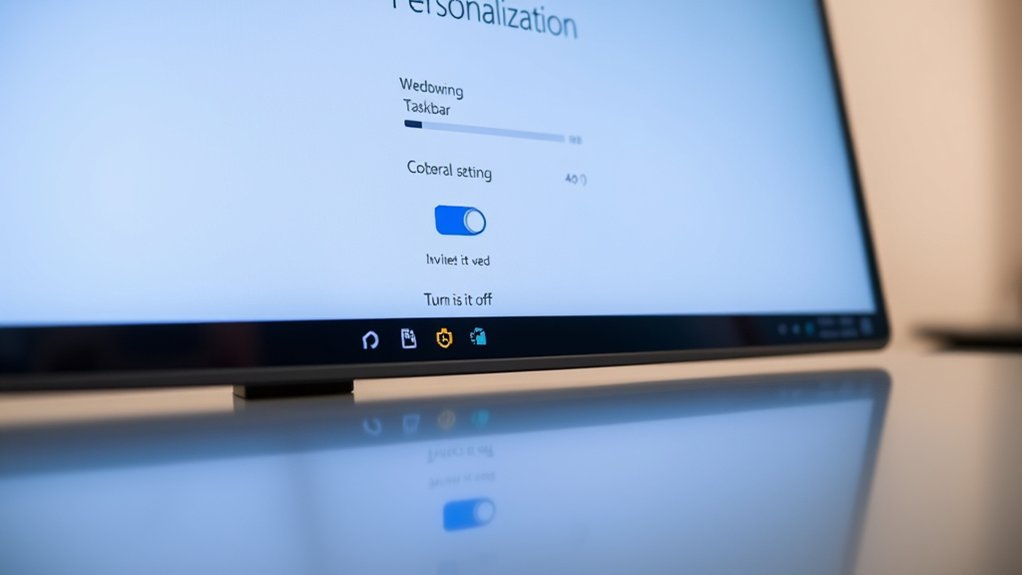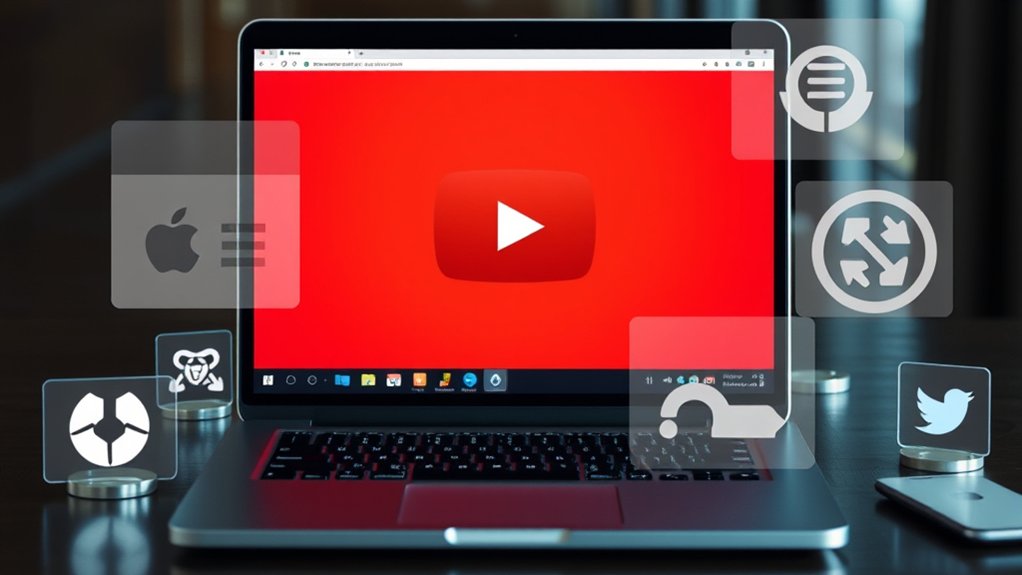To remove Copilot from the taskbar, users can follow a straightforward process. First, they should open the Settings application by pressing Windows + I. Then, they navigate to Personalization, select Taskbar, and turn off the Copilot (Preview) toggle. Restarting the computer is necessary for the changes to take effect. For more advanced options, users can employ the Group Policy Editor or Registry Editor to disable Copilot entirely, thereby customizing their interface further. Further instructions await those interested in deeper customization techniques.

Removing Copilot from the taskbar can improve a user’s experience by streamlining the interface and minimizing distractions. The process is straightforward, requiring users to navigate through the Settings application. By opening the Settings App using the shortcut Windows + I, one can access the Personalization section and select Taskbar.
Once there, users should look for the Copilot (Preview) toggle and turn it off, which effectively removes the icon from the taskbar. After making this adjustment, it is essential to restart the computer to make certain that the changes take effect. Additionally, for those seeking advanced options, the Group Policy Editor or Registry Editor can as well be employed for removal, providing flexibility for various user skill levels. Disabling Copilot ensures that unnecessary icons on the taskbar not only improves its visual appeal but significantly can boost productivity by reducing on-screen clutter.
To remove the Copilot icon from your taskbar, simply toggle it off and restart your computer for the changes to take effect.
Copilot, an AI-powered digital assistant integrated into Windows 11, offers features such as AI search and task assistance. It is designed for accessibility with its icon displayed prominently on the taskbar. Nevertheless, users have the option to personalize their experience and can choose to remove or hide this icon as needed. Moreover, the feature includes several methods to manage its settings effectively, giving users more control over their interface.
This customization aligns with Microsoft’s broader strategy of integrating AI into daily computing. In some cases, users may prefer a more complete disabling of Copilot. The Group Policy Editor serves as a powerful tool in this regard, allowing users to navigate to specific paths to turn off Windows Copilot entirely.
This process requires enabling the “Turn off Windows Copilot” policy, followed by a restart to apply the changes. Adopting these steps to manage Copilot can lead to a more organized and efficient taskbar, allowing users to focus on their tasks without the interruption of additional digital elements.
Such an approach to user interface management reflects a growing desire for tailored computing experiences, highlighting user control and functional simplicity.
Frequently Asked Questions
Will Removing Copilot Affect My Other Applications?
The removal of Copilot does not adversely impact other applications. According to system performance analyses, no core functionalities rely on Copilot. Moreover, Microsoft’s documentation confirms that applications within the Microsoft 365 suite and third-party software remain unaffected by its removal.
In addition, resource allocation may improve, potentially enhancing overall system efficiency. Consequently, users can confidently remove Copilot without concern for diminishing their application performance or functionality.
Can I Reinstall Copilot After Removing It?
Reinstalling Copilot after its removal is entirely feasible. Users may obtain it through the Microsoft Store, ensuring adequate storage is available.
Following removal, error codes, such as 0x80073D0D, may necessitate additional troubleshooting. It is advisable to restart the device prior to reinstallation.
After downloading, users must follow installation prompts, grant all required permissions, and integrate Copilot back into their taskbar, optimizing its settings for individual needs post-installation.
Is Removing Copilot Reversible?
Removing Copilot is truly reversible. Users can re-enable Copilot by traversing to the Settings app, particularly within the Personalization section under Taskbar settings.
Additionally, it is possible to modify policies through the Group Policy Editor, allowing flexibility in user experience.
Experts highlight the significance of understanding these functionalities, as they improve user interactions with their operating systems.
As a result, proper adjustments align with individual preferences and requirements for effectiveness in daily tasks.
Does Removing Copilot Free up Computer Resources?
The removal of Copilot from the taskbar can certainly free up computer resources. Disabling this feature potentially alleviates RAM usage, thereby boosting overall system performance.
Reports indicate that users experience reduced CPU load and additional disk space, which were previously allocated to Copilot processes.
Additionally, eliminating visual clutter improves user focus on tasks, contributing to enhanced productivity.
On the other hand, the absence of AI assistance tools may detract from the user experience in other areas.
What Happens to Copilot Settings After Removal?
After disabling Copilot from the taskbar, its settings remain intact but inactive. The feature continues to exist within the system, potentially running in the background except further modifications are made.
Users may find that maneuvering through the Settings or Registry Editor preserves certain configurations. Nevertheless, updates from Microsoft could restore functionality, prompting users to stay vigilant regarding system changes, as expert sources indicate that automatic re-enabling may occur during future updates.









